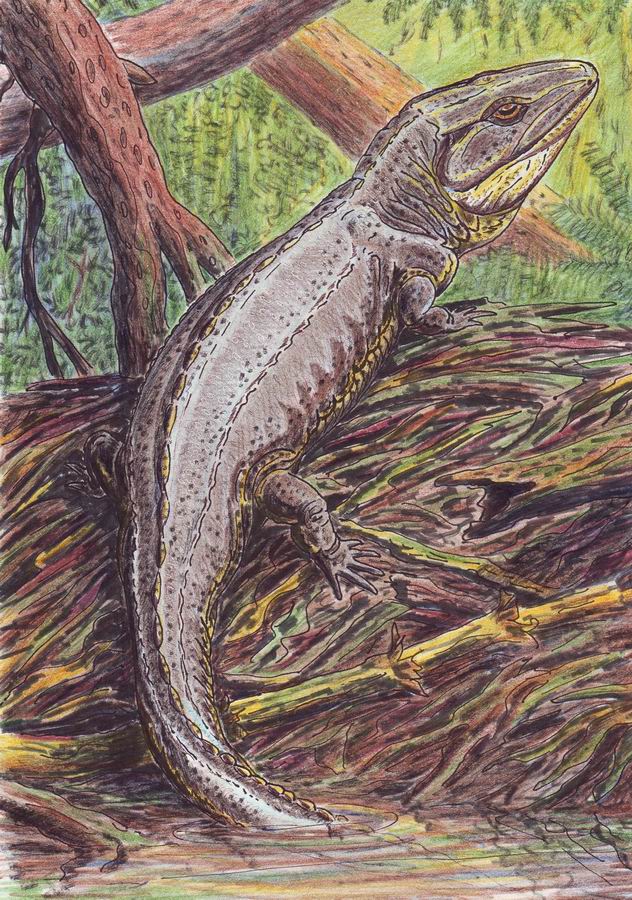- Proterogyrinus
Taxobox
name = "Proterogyrinus"
image_caption =
fossil_range = LateCarboniferous
regnum =Animal ia
phylum =Chordata
superclassis =Tetrapoda
superordo =Reptiliomorpha
ordo =Anthracosauria
subordo =Embolomeri
familia =Proterogyrinidae
genus = "Proterogyrinus""Proterogyrinus" was an
anthracosaur , which means that it belongs to a group of advanced amphibians with reptilian characteristics; consequently they are sometimes referred to asreptiliomorph s. It is likely that the first reptiles, such asPetrolacosaurus , evolved from reptilomorph amphibians.Its name is Greek for "early wanderer" or "earlier tadpole".
General Information
During the Late
Carboniferous period (323 - 290 million years ago), the amphibians were an exciting and diverse group of animals that had come to dominate the waterlogged forest world. "Proterogyrinus" was one of the largest amphibians, and was perfectly adapted for life in the swamps. It was a top predator that hunted both on land and in the water. Its powerful jaws had sharp teeth could handle animals that were quite large, such as fish, reptiles, other amphibians, and largearthropod s.Most Carboniferous amphibians were good swimmers and could move fast through the rivers, lakes, and bogs surrounding the lowland forests, but also could walk on land like some amphibians today. Many species either stayed in the water at all times or could only wriggle through the mud on the banks; few (including Proterogyrinus) ventured further into the forest. Being able to hunt away from the water's edge meant that "Proterogyrinus" could catch food in places where its rivals could not go. It also meant that it could escape water-borne enemies, such as predatory fish, by clambering on shore, or over the logs and other obstacles that frequently choked the
swamp s' river channels.In popular culture
Proterogyrinus appeared in "
Walking with Monsters ". It was shown acting like a crocodile; basking on the shorelines and leaping out of the water similar to modernalligators to catch aMeganeura . In the episode, it fought anArthropleura and won by knocking the Arthropleura off balance and causing it to fall upside down and impale itself on a bush stump. It then ate the Arthropleura's soft insides via its underbelly.References
Haines, Tim, and Paul Chambers. The Complete Guide to Prehistoric Life. Pg. 38. Canada: Firefly Books Ltd., 2006
Wikimedia Foundation. 2010.
